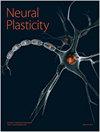线粒体功能障碍和Sirtuins:听力损失的重要靶点
IF 3.7
4区 医学
Q2 Medicine
引用次数: 3
摘要
线粒体功能障碍被认为是由衰老、噪音、耳毒性药物和基因引起的感音神经性听力损失(SNHL)的危险因素。活性氧(Reactive oxygen species, ROS)主要来源于线粒体,ROS诱导的氧化应激可导致耳蜗损伤和线粒体DNA突变,从而增加听力损失的敏感性和严重程度,并破坏离子稳态(如Ca2+稳态)。ROS的形成和积累进一步破坏线粒体成分,最终导致细胞凋亡和坏死。SIRT3-5位于线粒体中,属于sirtuins家族,是高度保守的依赖于烟酰胺腺嘌呤二核苷酸(NAD+)的去乙酰化酶。这些去乙酰化酶调节多种细胞生化活动。最近的研究表明,线粒体sirtuins,特别是SIRT3,在听力损失病理中调节ROS水平。尽管SIRT4和SIRT5在耳蜗中的确切功能尚不清楚,但其在其他组织中的分子机制表明其对听力损失具有潜在的保护作用。在这篇综述中,我们总结了目前关于线粒体功能障碍在听力损失中的作用的知识,讨论了线粒体sirtuins与SNHL之间可能的功能联系,并提出SIRT3-5对SNHL有积极作用的观点。本文章由计算机程序翻译,如有差异,请以英文原文为准。
Mitochondrial Dysfunction and Sirtuins: Important Targets in Hearing Loss
Mitochondrial dysfunction has been suggested to be a risk factor for sensorineural hearing loss (SNHL) induced by aging, noise, ototoxic drugs, and gene. Reactive oxygen species (ROS) are mainly derived from mitochondria, and oxidative stress induced by ROS contributes to cochlear damage as well as mitochondrial DNA mutations, which may enhance the sensitivity and severity of hearing loss and disrupt ion homeostasis (e.g., Ca2+ homeostasis). The formation and accumulation of ROS further undermine mitochondrial components and ultimately lead to apoptosis and necrosis. SIRT3–5, located in mitochondria, belong to the family of sirtuins, which are highly conserved deacetylases dependent on nicotinamide adenine dinucleotide (NAD+). These deacetylases regulate diverse cellular biochemical activities. Recent studies have revealed that mitochondrial sirtuins, especially SIRT3, modulate ROS levels in hearing loss pathologies. Although the precise functions of SIRT4 and SIRT5 in the cochlea remain unclear, the molecular mechanisms in other tissues indicate a potential protective effect against hearing loss. In this review, we summarize the current knowledge regarding the role of mitochondrial dysfunction in hearing loss, discuss possible functional links between mitochondrial sirtuins and SNHL, and propose a perspective that SIRT3–5 have a positive effect on SNHL.
求助全文
通过发布文献求助,成功后即可免费获取论文全文。
去求助
来源期刊

Neural Plasticity
Neuroscience-Neurology
CiteScore
5.70
自引率
0.00%
发文量
0
审稿时长
1 months
期刊介绍:
Neural Plasticity is an international, interdisciplinary journal dedicated to the publication of articles related to all aspects of neural plasticity, with special emphasis on its functional significance as reflected in behavior and in psychopathology. Neural Plasticity publishes research and review articles from the entire range of relevant disciplines, including basic neuroscience, behavioral neuroscience, cognitive neuroscience, biological psychology, and biological psychiatry.
 求助内容:
求助内容: 应助结果提醒方式:
应助结果提醒方式:


